The CFD
Computational Fluid Dynamics
CFD or Computational Fluid Dynamics is a technology that enables us to study the dynamics of things that flow. Using CFD, we can build a computational model that represents a system or device that we want to study, in this case Aussie Invader 5R.
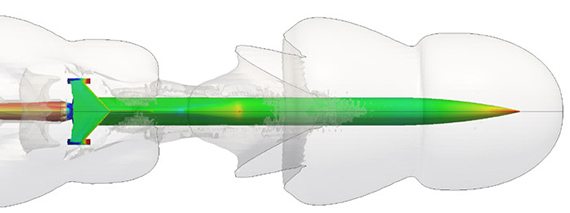
CFD software gives us the power to simulate flows of gases, liquids, heat and mass transfer through computer modelling. Using CFD software, we can build a ‘virtual prototype’ of Aussie Invader 5R and then apply real-world physics to the model, and the software will provide us with images and data, which predict the performance of that design.
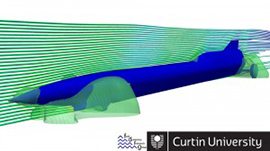
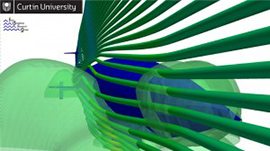
The Aussie Invader team has assembled a crack team of Mechanical Engineers from Curtin Universities Fluid Dynamics Research Group (FDRG) and iVec to assist us with some of the major hotspot areas on our racer that need some serious design and CFD calculations.
Certain features of our car have been set in concrete from the time of her inception, for example, centre of gravity, centre of area, front area profile, windscreen angle and location for rocket motor hardware and plumbing.

The areas that are now being seriously investigated include nose and front wheel fairing, fin and tailplane angle, section and surface area, reflected shock wave from tailplane and “V” underbelly, variable pitch and down force adjustment front and rear, tailplane adjustment, canards (wings) for the front of the car and rear axle fairing options, just to mention a few. These unknowns all present engineering opportunities our new found friends to study and make recommendations on.
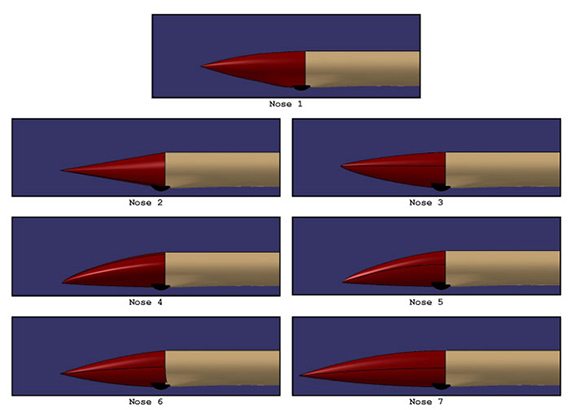
CFD For The Nose Design
Dan McKeon, worked for the Jordan Formula One team for several years. Dan was an early part of the team and was tasked with running assessing nose designs for Aussie Invader 5R as this is one of the most critical parts of the car.
The airflow over the whole car is dictated by what happens at the nose. Dan ran tests on different nose designs and the CFD results helped in the final selection of the nose design. Click here to read Dan’s full report.
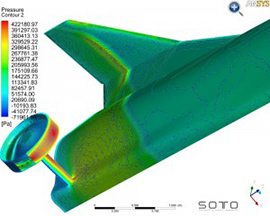
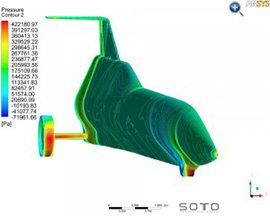
Pressure Contour
Early development of Aussie Invader 5R’s CFD was also undertaken by Soto Engineering and these images are courtesy of them and the work they initially undertook. The following selection of early CFD images has helped us to develop Aussie Invader 5R and refine many aspects on the initial design. The images on the left show a pressure plot through the length of the model, showing relatively high pressure acting upon the nose, front wheels and bottom and rear end of the car.
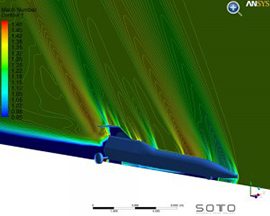

Mach Number
These images depict the changing Mach number generated by the cars shape. The contour lines illustrate where the mach number is changing in relation to the fluids velocity. As can be seen, there is a build up around the front and rear wheel. These areas show where strong shocks will form when the vehicle goes supersonic.
Velocity
The following images depict the velocity of the fluid stream around the vehicle. As can be seen, there is a high velocity produced by protruding geometries such as wheels and air foils. The rear of the vehicle produces a considerable wake as does the rear wheels. Areas in red show where the fluid stream is moving quickly and thus creating pressure drag on the vehicles surfaces.
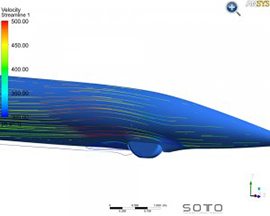
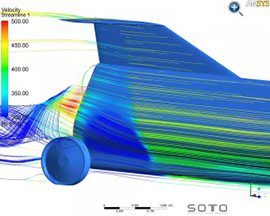
These images are from work conducted in the early stages to allow us to understand the areas of car that needed our attention. We will never be able to make this car completely aerodynamic, but we can reduce the drag as much as possible and try to make Aussie Invader 5R as safe and predictable as possible in this hostile and constantly changing environment.

